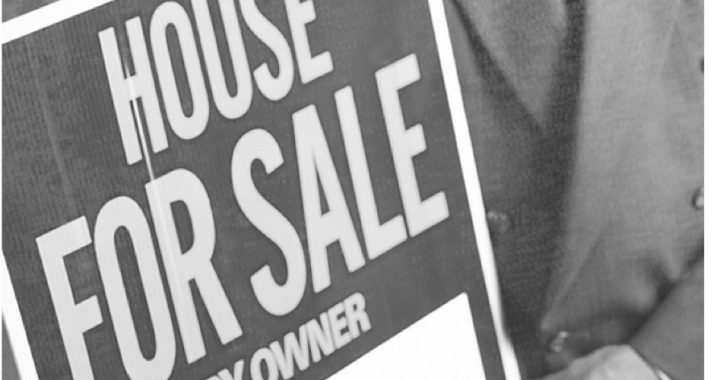
According to the Census Bureau, home ownership in the United States has now dropped to the lowest level since 1967, and estimates are that the decline will continue to the lowest level ever recorded. The rate for the second quarter of 2015 was 63.4 percent, the lowest rate since Lyndon Johnson was president. The rate stands a good chance of reaching the all-time low, 63 percent, set in 1965 when the U.S. government began keeping track of such a statistic.
It wasn’t supposed to happen. In 1995 after the rate dipped to a breath-taking, eye-popping 64.7 percent from the previous 50-year average of 65.3 percent, according to the Census Bureau, the Clinton administration issued a call to arms! The government must do something!
When then-President Bill Clinton announced his “National Homeownership Strategy” in May 1995, he said,
Owning a home has come symbolize the realization of the American Dream. Yet sadly, in the 1980s, it became much harder for many young families to buy their first homes, and our national homeownership rate declined for the first time in forty-six years.
Rolling out his “strategy,” Clinton and his secretary of Housing and Urban Development, Henry Cisneros, came up with 100 specific actions to take, and set a goal: “We can add as many as eight million new families to America’s homeownership rolls by the year 2000.”
It was essential, according to Cisneros, for the government to intervene in the marketplace in order to achieve this goal:
The strategy recommends a series of concerted actions to help middle-income and low-income families, racial and ethnic minorities, families with children, and young adults, [to] overcome [the] current barriers to homeownership.… [That way] we can translate strategy into achievement, making the dream of homeownership a reality for millions of hard-working people and building a better future for all Americans.
And what were those “barriers” so thoughtlessly and recklessly erected to keep those families and young adults from participating in the American Dream? Potential homeowners had to prove they had adequate incomes to service the debt! They had to have sufficient down payments — skin in the game — to reduce the risk to the lenders that they might just walk away if things got tough. These “barriers” had nothing to do with race or ethnicity, but with providing lenders assurance that the borrowers would be able to pay back their loans.
When Clinton presented his showcase strategy in the East Room in May 1995, he was introduced by Jean Mikitz, who, with her husband Jim, had just taken advantage of an FHA loan to buy their first home. For nine years they were able to make the payments on it, but by 2004, their financial situation reversed, housing prices had started to drop, refinancing was now out of the question, and they were forced to declare bankruptcy. This left the American taxpayer holding the bag on their FHA-backed loan.
In a microcosm the Mikitz family represents the millions who took advantage of low interest rates and soft lending standards to buy a home it turned out later that they couldn’t afford.
Then-Congressman Ron Paul (R-Texas) exposed the fallacy of government intervention in the economy to achieve political ends:
Laws passed by Congress such as the Community Reinvestment Act (CRA) required banks to make loans to previously underserved segments of their communities, thus forcing banks to lend to people who normally would be rejected as bad credit risks.
These governmental measures, combined with the Federal Reserve’s loose monetary policy, led to an unsustainable housing boom … manifest[ing] itself in overbuilding in real estate….
I’m afraid that policymakers today [he wrote this in 2008] have not learned the lesson that prices must adjust to economic reality….
Until the big-government apologists realize the error of their ways … I am afraid we are headed for a rough ride.
That rough ride continues. The Census Bureau report also revealed that rents are now at nose-bleed levels: $803 a month on average, the highest in history. With stagnant wages, more realistic lending standards, and rebounding home prices, families can’t afford to buy. With high and then higher rents, they can’t afford to rent. What is the third alternative? There is no good one: either move in with family or go on the public dole.
It will take time for the present surge in multi-family construction projects — i. e., apartments — to bring rents down to affordable levels. But the decline in homeownership will continue, putting the lie to the Clinton/Cisneros promise that government intervention would give the American family a shot at the American Dream.
Tyler Durden, writing at ZeroHedge, celebrated the 20th anniversary of the failed “National Homeownership Strategy” with this:
Mr. and Mrs. Mikitz’s story … ended in foreclosure. Mr. Mikitz, a 41-year-old mechanic, lost his house in 2004. Mr. Mikitz said they stopped making payments on the home when he and his wife divorced. “It pretty much forced me into bankruptcy,” he said.
There you have it. The American Dream in one cautionary tale.
A graduate of an Ivy League school and a former investment advisor, Bob is a regular contributor to The New American magazine and blogs frequently at www.LightFromTheRight.com, primarily on economics and politics.



